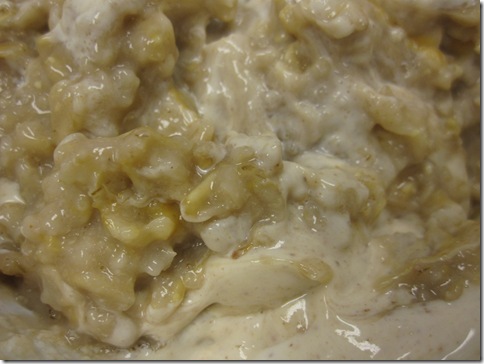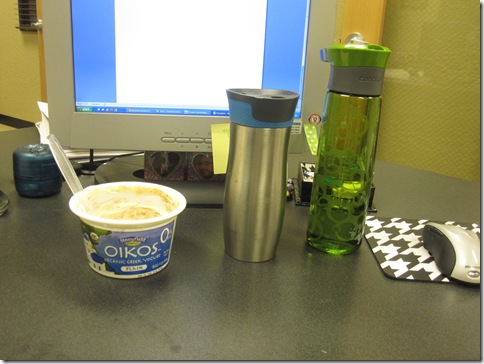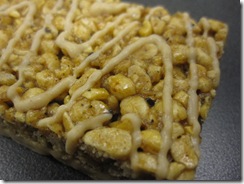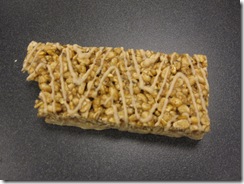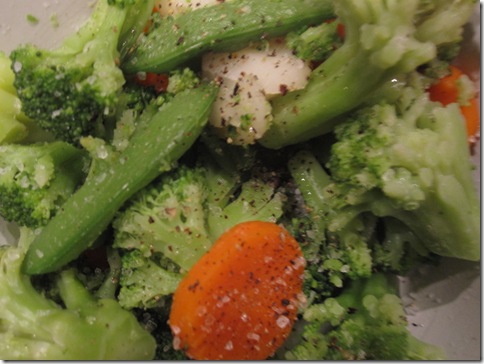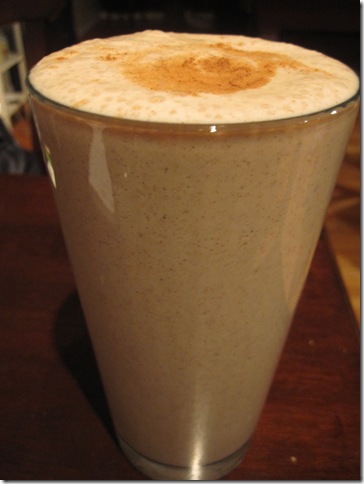No restaurant today can get away without purchasing or leasing some sort of refrigeration equipment. But what kinds of refrigeration do you really need? * In the simplest small restaurant setup, like snack stands, a standard home kitchen refrigerator dedicated to restaurant business is adequate providing you use thermometers to measure temperatures instead of counting on the equipment to work properly. All others need something a little more complex. * Refrigerators are the first and simplest. While stainless steel is the standard for an ordinary reach-in refrigerator, you can get away with anything that can be kept clean over the course of a normal business day. Be aware of what you need to store, and purchase a refrigerator with shelves that are strong enough to hold the weight of your products and that are easy to get to. Storing items in the door is a bad idea, as this part of the fridge stays warmer than the rest in a frequently-opened appliance, so don’t count on that for a lot of your storage. * If you have a medium to large restaurant, you’ll probably have to consider a walk-in refrigerator. These are all industrial, so you won’t have to worry so much about temperature control. Pay close attention when the salesperson tells you how much storage space you need; even though you may think you can get away with less, you’re better off counting on needing more than you expect. This also allows for expansion if you branch into other things, like catering. * If you go for a walk-in, consider whether this will be a permanent install or something you can take with you if you have to change locations. If you have a lease you may not be keeping long on your current space, it might be better to just be tough and purchase multiple movable refrigerators rather than go for a permanent install. Also, make sure your walk-in has an easy means for opening it from inside. This is generally only an issue with older units. * In some cases, you may be better off going with a refrigerated display case, like the ones you see in delis. Examine your menu offerings before deciding. *Freezers have approximately the same considerations as refrigerators, but ease of access is generally not quite as important. With freezers, it’s even more important than with refrigerators that you are certain you want a walk-in before you get one; there are few standalone walk-ins on the market. * A different type of refrigerated unit is an icemaker. This is totally different; before purchasing one, you should be clear about whether you want cube, nugget, or flaked ice for your business. You should also be aware of the space needed; an air-cooled icemaker requires a lot of space to function efficiently, while a water-cooled icemaker needs much less space, but also wastes a lot of water. Also, if you use an icemaker to fill ice dispensers or transport ice in buckets to other locations, you have to be very aware that it must be kept sterile. Food poisoning is often caused by unsanitary ice bin conditions when employees assume that the cold will kill any bacteria. Before purchasing any refrigeration equipment, know your restaurant, your needs, your space, and your customers. Making the right choices will save you more money in the long run. Different Types Of Refrigeration by: Glenn Day way of being moved from one area to the next without spoiling. Domestic vs. Commercial Refrigeration Domestic Refrigeration: This type of refrigeration is one that is familiar to most homeowners. Refrigerators and freezers that you keep in your home fall under this category. This is the type of unit that is used to keep food cold in a residential environment. Commercial Refrigeration: This type of refrigeration holds and displays frozen and fresh food in retail stores, as well as other like establishments. In most cases, this type of refrigeration is farther advanced than refrigerators that you would find in residential homes. As you can imagine, it is crucial that many commercial establishments keep their refrigerators up to date with food safety regulations. This ranges from retail stores to restaurants and many more. Food processing and Storage: This type of refrigeration is used to preserve process and store the food from its source to the wholesale division. If you are not in the food industry, you probably do not have much knowledge on this type of refrigeration. But even though you may not know about this, it still affects you in more ways than you can imagine. After all, you want your food to be fresh when it finally arrives at your home, right? There is also a large variety of specialized equipment that may be required to protect and store foods when being shipped by road, rail, air, and sea. In other words, the food cannot thaw out just because it is in transit. Instead, special equipment is used to make sure that food is kept at the appropriate temperature regardless of transportation method. All in all, there are many different types of refrigeration that help to ensure the overall quality and safety of food. Safe Food Storage – Refrigeration by: David McCarthy Storing Food Your Refrigerator: It is many years since schools stopped teaching cooking and domestic science and the result is that few people in the below 35 age bracket are familiar with risks presented by refrigerators. This article is aimed at covering a few basic rules that will help us store food in a safe and hygienic manner. The average refrigerator operates between 35F (2C) and 44F (7C), which is low enough to stop microorganisms from forming. (Microorganisms include bacteria and mould.) It is NOT cold enough to destroy microorganisms already present in the food; it is up to you to ensure the freshness of food that you buy. The fresher it is the less likely it is contaminated. Therefore you should buy fresh and get it into a fridge as soon as humanly possible. One of the major problems I see with refrigerators is that the door seal isn’t sealing properly. This places a heavier than normal load on the motor and causes burnout before the expected life span. Also it stops the refrigerator from maintaining optimum performance. The cost of replacing a door seal for a refrigerator or freezer is reasonably cheap and should be done at least once every 3 years. This will: – Extend the life of the machine. – Keep your food safer by maintaining constant temperature. – Save on electricity bills. There are also a few other rules that constitute sensible use of refrigeration that are basically common sense practices and adhesion to these rules will enhance all of the above benefits. – Do not open the door unless you know exactly what you wish to take out. Opening the door allows warm air into the storage area and this affects the electricity used and the food stored inside. Leaving the door open destroys what the machine has worked for hours to achieve. – Cover all food before you put it into the refrigerator and I go against common trends by covering with aluminum foil rather than cling film. Foil excludes light and light is an enemy of food. Food exposed to light deteriorates quicker than food that is protected from light. – I never advise placing warm or hot dishes into a refrigerator despite claims by various makers that it is safe to do so. It is better to cover the food and allow it to cool before placing into the refrigerator. Hot dishes placed into the fridge cause frosting within the machine and this forms an unwanted insulation layer over the contents. – Raw food such as meat and fish should be covered and placed in the coolest section, normally the top section. If they are uncovered they can pass their flavor to other foods such as cheese or butter. – Cooked meat and other cooked foods should go in the middle section. – Vegetables and fruits into the specially designed crispers. These basic rules will help you produce better meals because the food you use will be at its best. This article is copyright © David McCarthy 2006 and may only be reproduced in its entirety without additions. Energy and the Environment – Nearly 90% of Global Warming Gas Emissions Are CO2 by: Larry Butz “There is a 90 percent chance the planet’s average temperatures will rise 3 to 9 F (1.7 to 4.9 C) by 2100.” This simple statement in the June 2001 report released by National Center for Atmospheric Research in Boulder, Colorado leaves little doubt of the magnitude of the threat from global warming. The UN Environment Program estimates that the extra economic costs of disasters attributable to global warming are running at more than $300 billion annually. The global community is responding with actions lead by the Kyoto Protocol, which aims to reduce emissions of global warming gases. Nearly 90% of global warming gas emissions are CO2, which are primarily from the use of fossil fuels for energy. The focus on energy will undoubtedly continue to increase. Throughout the world different methods are being used to encourage reduced energy use. Japan has enacted the Energy Conservation Law in 1999. The U.S. has revised ASHRAE Standard 90.1 to raise the minimum COP level for centrifugal chillers from the current value of 5.2 to 6.1 effective in October of this year. A growing number of countries are using environmental costing which includes an estimated cost for resource depletion and environmental deterioration. Although such fees to discourage pollution were first proposed in 1920 they did not see widespread application until 1990 when Finland implemented the first carbon tax. At present there are more than 30 countries that have some type of carbon tax in effect. Environmental accounting (or costing) is a broader term than just a carbon tax on energy. For example, subsidies being provided to energy producing industries are a form of negative tax. Removal of such subsidies has the same effect as a carbon tax, which is to raise the price of energy to the user. Such methods make more energy efficient alternatives more financially attractive. In the recently released “OECD Environmental Strategy for the First Decade of the 21st Century” the goal is to include “cuts to energy, farm and other subsidies so prices more accurately reflect environmental impacts”. China, the U.K., India, Indonesia and Thailand are countries that have recently eliminated subsidies to parts of their energy industries. Will environmental costing continue to spread? Environmental costing is an estimated cost for resource depletion and environmental deterioration. One can only guess. It is intuitively attractive to tax something bad, i.e. environmental damage rather than something good such as one’s salary or company’s profits. As a building owner, facility engineer or factory manager the implications are enormous. Just how much could energy prices change? According to European Research Commission Report released in July of this year “The cost of producing electricity from coal or oil would double if costs such as damage to the environment and health were taken into account”. Coal subsidies in China have been more than halved since 1984, and nearly 1 million coal-mining jobs have been eliminated over the past five years as a result of far-reaching coal reduction initiatives. In 1999 alone, total coal use in China dropped 4.4%. Petroleum subsidies fell from 55% in 1990 to 2% in 1995. Source: EIA April 2001. Any significant change in the price of energy can have a major impact on the profitability and value of a building or factory. One can protect their interests by investing in the highest possible efficiency that is economically justifiable. In the past energy efficiency improvements in the U.S. have had a median payback of only 1.9 years meaning that IRR’s of up to 70% were not being selected. This is now changing. In addition to the economic attractiveness of high efficiency there are environmental gains through reduced emissions of carbon dioxide and other power plant emissions that are harmful to the environment. The move to high efficiency equipment is accelerating. And at the same time, there is increasing emphasis in system design and optimization. Low flow/high delta T systems are offering energy savings in operating costs and first cost through smaller pipe diameters and pump sizes. The focus on high efficiency HVAC equipment and systems will continue to increase as additional emphasis is being placed on the environmental costs associated with energy use. Green Job Growth Set to Explode in U.S. by: Elizabeth Nichols The huge potential for growth in green jobs is being mandated and funded. The Energy Independence and Security Act of 2007 require large utilities to obtain 15 percent of their electricity from new renewable resources such as solar and wind by 2020. On May 18th, 2009, Secretary of the Department of Energy Chu announced the first 16 of the 100 standards that much be addressed by September in order to clear the way for the expenditure of Stimulus Package funds towards expanding the Smart Grid. Small and medium-sized businesses particularly are predicted to expand the green jobs market rapidly over the next ten years with considerable financial support for the investment markets and government. The Cleantech Network reports that venture capitalists have put $1.74 billion into North American and European green technology start ups in just the third quarter of 2007. Additionally, the energy crisis and the large number of retirements expected over the next 10 years in public utilities are contributing to the transition to a greener economy. According to the President of the Association of Energy Engineers, Rusty Hodopp, 41 percent of its members plan to retire within the next ten years. The skill set that workers need to have in place is varied and multiple within the five green energy industries of wind, solar, biomass, geothermal, and smart grid. Currently, Germany and Spain each generate 5 percent of their energy from the wind while U.S. total is only .5 percent. Wind power ranked second to biomass as a renewable energy job source as of 2006 in the U. S. The capacity to create all the energy needed for the entire country from just wind power is estimated to be within boundaries of four states—Texas, North Dakota, Kansas, and South Dakota, according to a U.S. Conference of Mayors Report. Since 2000 installation of solar panels has increased by 45 percent each year and the industry growing by 35 percent each year. It is working on reducing cost associated with manufacturing and installation. In the U. S. biomass is very research-oriented with a focus on corn ethanol. Biomass is used in Brazil with 40 percent of its transportation fuel made by using sugar cane. It reduces the carbon footprint of the consumer, but only by about 15 percent as energy must be used to convert plant and animal material into clean energy. Smart Grid refers to increasing the proportion of renewable energy in the mix of energy sources to decrease vulnerability to terrorist attacks as well as brown-outs and black-outs. President Obama sited Xcel’s efforts to make Boulder, Colorado the country’s first smart grid city in his introduction of the Stimulus Package. These emerging industries have companies throughout the world many of which have job listings across the disciplines on line. The common bond in this green jobs field market is the need for engineering professional or technical training experience. Many of the companies are also looking for team players with open communication styles. It seems prudent to develop our green jobs with the necessary skills and flexibility to adapt to our greener economy. A Quick Guide to Air Compressors by: Stephanie Larkin There are many things that you should know about air compressors before you start to use them. First of all, you should know what air compressors are and how you can use them. Then, you should know some basic guidelines for using them and maintaining them. The first big thing for you to know about air compressors is what they are. Air is one of the hardest things to harness, however it is one of the strongest things. The wind is something that no one can see and no one can really touch, but it can do amazing things when it is blowing hard enough. This is what an air compressor really is. It is a way for you to harness the air and use it. There are many different types of air compressors. Some of them are used in building and creating, and some of them are used in order to convert air to things that we can use, like breathable gas. For the most part, they work in the same way. The chamber is pressurized, and this pressure is what leads to the harnessing of the air. Because the way that the chambers inside of the machine work, and because of the very small nozzles, the air is forced out with great speed. This means that the air compressors can be hooked up to anything and then the air can be used. The air compressors themselves simply gather the air into them and then press the air very tightly. The machines are able to do this through pressure. Once the air has been held tightly, it can be released and can be very powerful. You can use the air compressors for many things. One of the things that it is used for is to hook up to a nail gun. This helps to drive the nails into the wall at a much faster and stronger pace than a hammer. You can build something much faster this way and it is going to be much easier for you to use. A air compressor is also used in things like washing. It can be hooked up to spray washers or other items and when the air is released, the washers will do their job much better. This way, the air works to propel the water and it can get done much faster. There are also air compressors that aide people. For instance, one of the most popular types of air compressors is the kind that converts the gasses into breathable air so that a person can go diving and still be able to breathe. This is a very popular type of air compressors and it works in the same way. Regardless of what type of air compressors you have, you need to know several things about keeping them. First of all, you must read the directions for the particular air compressors that you have very carefully, because it is very dangerous to use air compressors in ways for which they are not intended. You have to be very sure that they are only used as they should be used, and that they are always supervised. This is another very important thing to remember. Air compressors can be very dangerous because of the air that can shoot out of them and also what they might be hooked up to. Air compressors themselves can be very dangerous. If they are exposed to too much heat, too much cold, or even to sharp objects, they could explode. They could be damaged, and they could cause much damage, Therefore, you have to be sure that you are never using them incorrectly and also that you are always storing them in exactly the right manner. This will help you make the most out of your air compressors and make everyone safe. Safety should be your number one concern, and it is also an important part of keeping the air compressors around for along time. These are very expensive machines, so when you are using them you want to be able to do so for years. You don’t want to have to buy new air compressors each time the need comes up, so if you can keep the ones that you’ve got in good working order, you will be much happier. So keep them used correctly, stored properly, and out of harms way. This way, you will be sure that the air compressors that you have are around for along time and that they will always be good for you. You can use them for lots of things, so keep them safe. Air Compressors – What You Definitely Need to Know by: Bill Harris Perhaps the most important question of all when it comes to thinking about buying an air compressor is do you really need to buy one? If you use an air compressor for an odd job every now and then, you’re probably much better off simply renting one when you need to. If you use an air compressor often, though, then you probably should go ahead and buy one, since those rental fees or leasing fees do add up over time. When you start planning for your actual air compressor purchase, you’ll want to first consider what types of jobs you’ll be using it for. Since air compressors are rated and sold according to horsepower, you need to know what horsepower is needed for the particular tools you’ll need be using the air compressor with. Don’t start your shopping until you know this or you may end up buying more horsepower than you need—or can really afford. Which brings us to step two in purchasing an air compressor: set a budget for your purchase. There are a multitude of air compressors out there, and the price range varies significantly. If your budget is small, you may want to look into used or refurbished air compressors. Often, this a great way to get a terrific buy on a top brand name one that you couldn’t otherwise afford. Once you know exactly how much horsepower your air compressor should have and how much you can spend, you’re ready to start shopping. The place to start is on the Internet. You can easily find air compressors for sale online. You can also find product reviews on them that can be of great assistance to you in making your purchase. You can also do some comparison shopping for used air compressors at auction sites like eBay. Sites such as this are a great way to buy a high quality air compressor at an affordable price. Still, don’t buy more horsepower than you need or you may find your air compressor is not compatible with the tools you want to use it with. And stick to that budget! When shopping around, it’s easy to either get overwhelmed and just buy something or to get carried away and buy something you can’t truly afford. That’s why it’s essential to know what you’ll be using your air compressor for and to have a budget in place. Research is always a good idea to ensure you get the best value for your money. Which is, after all, the point! Remember, you want to get the best air compressor possible, while spending the least amount of money possible and still purchase a high quality air compressor. So do your homework. You’ll be glad you did when you see how much money you’ve saved on your air compressor purchase. Evaporators by: Mohamed Fawzy Elsayed The evaporator is one of the main components of a refrigeration system, in which refrigerant evaporates for the purpose of extracting heat from the surrounding air, chilled water, or other substances. In vapor compression refrigeration systems, the evaporator is also an indirect-contact heat exchanger. Evaporators can be classified into three categories, depending on the medium or substance to be cooled: An air cooler is an evaporator that cools the air directly in a refrigerated space or piece of equipment (such as a packaged unit). Conditioned air is then distributed through air distribution systems. In an air cooler, the refrigerant flows inside the metal tubes or finned tubes while air flows over them. In a liquid cooler, chilled water is cooled to a lower temperature and is pumped to remote air handling units, fan coils, or other terminals for air conditioning or other applications. An evaporator can be used to produce ice directly, such as an ice maker in an ice harvester of an ice storage system. A liquid cooler is different from a chiller. A liquid cooler is an evaporator, a component of a refrigeration system, whereas a chiller is a refrigeration package to produce chilled water. The refrigerant feed for air and liquid coolers and ice makers can be classified mainly into the following three types: 1-Dry-expansion or direct-expansion (DX): In evaporators with dry- or direct-expansion refrigerant feed, liquid refrigerant is fed through an expansion valve and a distributer, flows inside the tubes in a finned coil, the evaporator, and is completely vaporized and superheated to a certain degree before reaching the exit of the evaporator. 2-Flooded refrigerant feed: In evaporators with flooded refrigerant feeds, liquid refrigerant is fed through a throttling device and vaporizes outside the tubes within a shell. The refrigerant-side surface area is always wetted by the liquid refrigerant, which results in a higher surface heat-transfer coefficient. 3-Liquid overfeed: In liquid overfeed evaporators, liquid refrigerant is fed by a mechanical or gas pump and is then overfed to each evaporator. The inner surface in an overfeed evaporator is also wetted by liquid refrigerant. Saviez-vous que l’eau, la plus vaste ressource naturelle du monde, est probablement la source d’énergie de l’avenir? Cela va assurément nous aider à résoudre certaines préoccupations croissantes du réchauffement de la planète et d’autres problèmes écologiques. Marqué par sa simplicité et son efficacité, il existe des solutions pour apprendre comment amener votre véhicule à fonctionner avec de l’EAU autant que de l’essence. Dès l’application du système, qui utilise l’eau comme source d’énergie complémentaire au carburant traditionnel, il est possible de réduire les émulsions de gaz à effet de serre, de même que les factures d’essence. En effet il est possible d’optimiser la combustion du mélange air carburant habituel en joignant un additif composé d’hydrogène, appelé gaz HHO. Avec de l’eau nous allons pouvoir obtenir ce gaz non polluant pour l’environnement en réalisant une électrolyse. Pour cela nous faisons passer de l’électricité dans l’eau, alors la propriété atomique de l’eau H2O se modifie pour devenir de l’hydrogène d’une part et de l’oxygène d’autre part. C’est l’électrolyse. En se séparant l’hydrogène et l’oxygène contenus dans l’eau se dégagent sous la forme d’un gaz de structure atomique : deux atomes d’hydrogène (2H) pour un atome d’oxygène (O). D’où la terminologie : Gaz HHO. Que se passe-t-il lorsque l’on combine le gaz HHO avec le combustible pour alimenter un moteur ? Il a pour effet immédiat d’augmenter l’indice d’octane du carburant. « L’indice d’octane » est la quantité de carburant qui peut être compressée avant qu’il ne brûle. Par conséquent, le moteur est plus performant, car beaucoup plus d’énergie sont mis en jeu durant le même cycle de combustion. Ainsi moins de carburant est gaspillé et consommé par le moteur ! Suivant les réglages il est possible de réaliser une économie d’essence pouvant aller jusqu’à 50%. Ainsi si l’on fait le bilan, en utilisant de l’eau, il est possible au final de réduire les émissions de gaz CO2 et de réduire donc l’effet de serre ! Cette technologie ne nécessite pas de réservoir d’hydrogème (ce qui peut être dangereux). Le système fonctionne à partir d’un générateur HHO embarqué dans le véhicule qui produit de l’hydrogène à la demande, seulement lorsque le véhicule roule. Ainsi il n’y a pas de zone de stockage à l’intérieur du véhicule. Second hand refrigeration equipment is often thought to be good value for money for the small to medium catering or leisure business. Unfortunately, as many will testify, this is a false economy. Commercial refrigeration depends on reliability and quality, and even the best second hand equipment can’t offer that with certainty. The only way to personally ensure your business is covered is to invest in new refrigeration equipment. This will largely come with a warranty for a given period, which will afford peace of mind in the face of disaster. If your business depends on refrigeration, it is crucial that you invest in the proper equipment to avoid paying through the nose for repairs and spare parts. Buying a second hand commercial refrigerator isn’t as simple as buying a second hand car or van. With a second hand car, you get the chance to inspect the engine (if you know what you are looking for), look around for the tell tale signs of rust and degeneration, and maybe even take a test drive to determine other aspects of performance that aren’t immediately obvious. Additionally, you can generally get a fair idea of the state of the vehicle simply by looking at it, which means you can weigh up your decision effectively, even without a trained eye. Add to that a record of past ownership and an indication of level of use through mileage and you’re going to be capable of forming a rounded opinion. Now consider refrigeration equipment. When buying second hand, there’s no test drive. There’s no opportunity to inspect the engine, or rather the compressor, because you can’t see inside the unit. There’s simply no way to gauge by looking at the unit, and even with a trained eye, you’d find it hard to predict the lifespan of any particular second hand unit. On top of that, there’s no way of knowing how old the unit is, or under what conditions it has been used. In fact, you don’t even know that the unit is working effectively, and there’s no way to tell until it ruins stock. Furthermore, you might find a great price on a second hand unit, but it’s likely you will end up spending double or more on repairs within the first six months of use, and you won’t find any warranty in place to cover these costs. With new equipment, you are firstly guaranteed that the unit is clean, in addition to knowing it is up to date technology. You know the compressor is clean and free of any restrictions and dirt, and you know it’s running perfectly unless you have to rely on the warranty. In fact with most new units, it’s rare to see a need for repairs years beyond any warranty the manufacturers give. Although new equipment might be more expensive in terms of capital outlay, the cost of keeping the machine going will be significantly less over the long term, which will save you money as well as produce better results. Source: Free Articles If we are to define air conditioning we will have to say that it is the mechanical way of regulating the temperature, humidity, cleanliness and air flow inside a room or a building. The job of an air conditioner would be to control the temperature-humidity ratio at such a level that that it is both comfortable for us and is also healthful. As most air conditioners come with a filter it also clean the circulating air of the various contaminants like dust, soot, pollen, etc. Although not to the levels of an air purifier, air conditioners do in fact clean air considerably. What an air conditioner unit actually does is it draws in air from a room or a building and passes it across that side of the refrigeration apparatus which is much colder and absorbs the heat in the air. How cool the refrigeration apparatus is, is determined by how a thermostat is regulated. For water-cooling airconditioning units, the heat is drawn away by the water flow. So fundamentally the principle is simple. However, there are a number of things that are associated with a modern air conditioner, which makes it more than just a cooling device. In fact if it remains just a cooling device, it would be actually wrong to call it an air conditioning unit. Ideally it should provide a comfortable temperature inside the room, no matter how hot or how cold is it outside. So many air conditioners come with a heat pump whose function is to just reverse the refrigeration cycle. So when it is chilling cold outside, you can still be warm and cozy inside. Although the rudimentary ideas of the concept of air conditioning can be traced back to the early decades of the nineteenth century it was only in the first half of the previous century that air conditioner as we see it was introduced. Since then air conditioner had little stopping and it has become an integral part of our life. Although we generally tend to associate air conditioning with the comforts of life, it is also crucial to carry out several processes. For example certain operations like an open heart surgery can be conducted only under a controlled environment, and without air conditioner that would not be possible. Many industries, including the chemical and pharmaceutical industries cannot do without air conditioning. In fact it is hard to conceptualize today’s world without air conditioning. Source: Free Articles Finding ways to reduce energy is always a smart way to cut costs, but with the current cost of consumption, conserving energy can make a big impact on the bottom line. With improved technology of heat exchangers, dramatic energy savings are now possible when brazed plate heat exchangers are used in various applications. What are brazed plate heat exchangers? Brazed plate heat exchangers aren’t a brand of heat exchangers, but a style. The two most common types are tube and shell, and plate and frame. The shell and tube heat exchanger design consists of u-shaped heating elements encased in a cylindrical tube. On the other hand, plate and frame heat exchangers are a “sandwich” of heat conducting plates through which independent circuits push fluids. Brazed plate heat exchangers are a type of plate and frame heat exchanger that is brazed in a vacuum furnace to reduce leaks. How They Work: Brazing is the process of melting layers of metals which are used to fuse together close fitting plates, thus creating a sandwich of different layers. Once the bonding metal cools, the result is an unusually strong component engineered for heat transfer. A brazed plate heat exchanger works by conducting unwanted heat through numerous layers of metal encased in a vacuum furnace and releasing the heat into a permissible area. Heat Exchangers Mean Lower Energy Use: Perhaps the greatest benefit of the exchanger is its small size and relatively low energy usage. For its size, this type of plate heat exchanger has a lot of muscle. The difference with plate and frame heat exchangers is that liquids actually make contact with the heat conductor unlike with a shell and tube design where liquids can only make contact with the outer shell. In the past, brazed plate heat exchangers were used for refrigeration units up to 80 tons, but today can be used for units up to 160 tons. Lower Energy Usage; a Powerful Selling Point: In a highly competitive market, reduced energy usage is a big selling point for end users. If the functionality of a product is similar to the competition, benefits like energy usage win customers. The benefit of reduced usage cost over time allows manufacturers to charge a higher premium while saving the customer money in the long run. Benefits: Brazed plate heat exchangers have a reputation for reliability which reduces the overall cost of maintenance and repair even further. The very process of the fluid turbulence over the metals has a natural self cleaning effect that eliminates damage due to build up. Additionally, they are between 50% and 80% smaller than other varieties of heat exchangers. Because of their compact nature, these heat exchangers are not only energy efficient and cost effective, but also adaptable for a variety of different uses. Uses: These exchangers are commonly used for refrigeration units, but also ideal for heat pumps, floor heaters, domestic water heaters, swimming pool heating, snow melting appliances, and any type of fluid to fluid heating unit. There are also plenty of industrial uses for brazed heat exchangers such as in hydraulic oil coolers, transmission and engine coolers, and in marine and seawater applications. The ton capacity of heat exchangers varies from manufacturer to manufacturer. Be sure to compare the specifications of various terms of productivity and performance. In today’s market, production of goods with high productivity and low cost of ownership is more crucial than ever and engineering products around brazed heat plate exchangers is a step toward meeting that goal. There has been much discussion, both among experts and lay people about the ‘greenhouse effect’. The greenhouse effect is a term that refers to changes in the Earth’s atmospheric composition, which have been related to the warming of our planet. There is a growing amount of evidence that human activities, particularly those relating to the burning of fossil fuels like oil and coal, are major contributors to the greenhouse effect. The predicted consequences for the planet as a result of the greenhouse effect are extremely serious. They include major changes in the climate that will have an impact on food production and rising sea levels, which will put many coastal and other low-lying communities under water. Additional information that we have learned about the planet Venus provide a frightening example of the greenhouse effect. Venus has a very dense atmosphere made up of gases. The planet has what has been described as a ‘runaway greenhouse effect.’ It has surface temperature of about 800 degrees Fahrenheit. Experts generally point to gases like carbon dioxide as the main contributors to the greenhouse effect. Carbon dioxide, which is a gas that is exhaled by everyone, can absorb infrared radiation. This type of radiation is heat that is radiating away from a warm object. During the day, the Earth is warmed by sunlight, and at night, the Earth cools off by radiating the heat back into space in the form of infrared radiation. Carbon dioxide, and other gases to some extent, absorb this radiation and limit its exit into space. Therefore, the natural cooling mechanism is thwarted. While it may seem that eliminating the greenhouse effect would be the best strategy, this is not what we want to do. Water vapor represents another element in the heat-absorbing process. There is a great amount of water vapor in the atmosphere at all times. This is why we experience rain. We need the water vapor in the atmosphere to keep the Earth at its normal, comfortable temperature. Without the warmth created by water vapor, the planet would freeze, and that would be the end of life as we know it. Therefore, we need to have some degree of the ‘greenhouse effect’ in order to maintain life on Earth. We need to strike a balance. Mother Nature is telling us, again, what we should already have learned by now – in any situation, extremes of any kind cause harm. While many contend that there are different reasons behind the changing of our climate, few can deny that our planet is going through a period of immense changes. While some may discredit the science, global warming is one of the main hypothesis for why our planet is heating up. In this article, we’ll try to explain some of the science behind global warming so that you can understand the problem more clearly. According to numerous scientific studies, our planet’s surface temperature has increased by about 1 degree Fahrenheit within the last century. Most of this change has occurred in the past two decades, prompting the question: are our lifestyles accelerating this global change? The evidence definitely seems to point in that direction. Many scientists point to the emission of greenhouse gases as one of the leading reasons that we are undergoing this global change. Carbon dioxide, methane, and nitrous oxide are some of the main compounds that we are releasing more and more, causing something known as the ‘Greenhouse Effect’. This occurs due to the fact that these gases tend to trap heat, and when they are released into our upper atmosphere, they trap some of the heat energy that would normally be reflected by our earth’s natural processes. It’s an undisputed fact that there is more greenhouse gas in our atmosphere due to humanity. Since the beginning of the industrial revolution, it is estimated that the amount of carbon dioxide in the atmosphere has increased by as much as thirty percent. While a little greenhouse gas helps to keep our planet warm, the more and more that we release, the hotter the planet is going to get. That is an important fact to consider, being that our biosphere is finely tuned to live at the temperatures at which our planet currently operates. Many forms of both plant and animal life run the risk of extinction should the temperature change be accelerated. Fossil fuels are primarily responsible for the amount of greenhouse gases that we are releasing, and to help fix the problem, we are going to need to find an alternate source of energy, and quick. Research into alternative fuels has yielded several possible options, including the use of corn in the production of ethanol, which has already had proven usage in places such as Venezuela. The most accelerated period of temperature change has occurred in the past twenty years, and it’s clearly evident that we need to address this problem while we still can. Source: Free Articles Former Vice-President Al Gore has just released his documentary, “An Inconvenient Truth”, from Paramont Classics along with his book of the same title. In his computer-aided lecture/slide show/sermon, Gore presents compelling scientific evidence to back his claim that, without a major shift in public policy and private behavior, the world is heading for a disaster of biblical proportions. The culprit is Carbon Monoxide that is released into the atmosphere by gas-guzzling cars, coal-hungry power plants and burning forests. The gas forms a thick blanket that traps the sun’s heat and warms the planet, causing glaciers to melt, oceans to rise and weather patterns to change. Gore says the changes are already evident in more severe droughts and storms (the film crew was planning a trip to New Orleans just before Katrina hit), the spread of new diseases and drowning polar bears, whose glacial stomping grounds are disappearing at an alarming rate. “What we take for granted may not be here for my children,” warns Gore, who delivers the same message in a companion book, also called “An Inconvenient Truth” (Rodale, 328 pages, $21.95). Energy from the sun drives the earth’s weather and climate, and heats the earth’s surface; in turn, the earth radiates energy back into space. Atmospheric greenhouse gases (water vapor, carbon dioxide, and other gases) trap some of the outgoing energy, retaining heat somewhat like the glass panels of a greenhouse. Without this natural “greenhouse effect,” temperatures would be much lower than they are now, and life as known today would not be possible. Instead, thanks to greenhouse gases, the earth’s average temperature is a more hospitable 60?F. However, problems may arise when the atmospheric concentration of greenhouse gases increases Since the beginning of the industrial revolution, atmospheric concentrations of carbon dioxide have increased nearly 30%, methane concentrations have more than doubled, and nitrous oxide concentrations have risen by about 15%. These increases have enhanced the heat-trapping capability of the earth’s atmosphere. Sulfate aerosols, a common air pollutant, cool the atmosphere by reflecting light back into space; however, sulfates are short-lived in the atmosphere and vary regionally. Why are greenhouse gas concentrations increasing? Scientists generally believe that the combustion of fossil fuels and other human activities are the primary reason for the increased concentration of carbon dioxide. Plant respiration and the decomposition of organic matter release more than 10 times the CO2 released by human activities; but these releases have generally been in balance during the centuries leading up to the industrial revolution with carbon dioxide absorbed by terrestrial vegetation and the oceans. What has changed in the last few hundred years is the additional release of carbon dioxide by human activities. Fossil fuels burned to run cars and trucks, heat homes and businesses, and power factories are responsible for about 98% of U.S. carbon dioxide emissions, 24% of methane emissions, and 18% of nitrous oxide emissions. Increased agriculture, deforestation, landfills, industrial production, and mining also contribute a significant share of emissions. In 1997, the United States emitted about one-fifth of total global greenhouse gases. Estimating future emissions is difficult, because it depends on demographic, economic, technological, policy, and institutional developments. Several emissions scenarios have been developed based on differing projections of these underlying factors. For example, by 2100, in the absence of emissions control policies, carbon dioxide concentrations are projected to be 30-150% higher than today’s levels. Warmer temperatures allow mosquitoes that transmit diseases such as malaria and dengue fever to extend their ranges and increase both their biting rate and their ability to infect humans. Spring now arrives earlier in many parts of the world. Evidence of this comes from earlier thaw dates for rivers and lakes; earlier dates for plant blooming and leafing; and earlier animal egg-laying, spawning and migration. An earlier spring may disrupt animal migrations, alter competitive balances among species, and cause other unforeseen problems. A warmer climate will bring an increase in precipitation worldwide, especially during winter and in mid- to high latitudes, according to climate model projections. In addition, more precipitation is expected to fall in downpours and heavy snowstorms leading to increased flooding and damages. The area of the U.S. affected by extreme rainfall has increased significantly since 1910. Heavy rainfalls have also increased in Japan, the former Soviet Union, China, and Australia. As climate change increases the risk of flooding, human changes in land use and land cover can also contribute to the growing risk of flooding. As the climate heats up, droughts are expected to become more frequent and severe in some locations. Sustained drought makes wildfires more likely, and crops and trees more vulnerable to pest infestations and disease. Generally, local land use and land cover changes can exacerbate the climate change-driven increase in drought risk. For example, in the tropics, “slash-and-burn” land clearing practices can trigger large fires during extended droughts. We are seeing increasing numbers and severity of storms and just a couple of days ago, tropical storm Angelo started the hurricane season even earlier than last year. The only way to make any significant impact is for all of us to take responsibility. On Larry King Live on June 13th 2006, former Vice-President Gore stated that if we don’t do something about the greenhouse effect caused by the polutients form fossel fuels and within the next ten years “we will pass the point where we won’t be able to do any thing about it”. We need the time to continue working on alternatives like hybrid vehicles and other energy sources. As the average temperature of the planet rises every year we also have started using the air conditioner more. The result is that we are heating up the environment even more. What happens is, whenever we turn on the air conditioner, it releases carbon into the air. And carbon has been identified as the element that insulates our planet and is a major contributor in global warming. And if we are to believe recent studies, the worse is yet to come. Actually we have got into this vicious loop where the hotter it gets, the more of air conditioning we use, and consequently the earth gets even hotter. If we look at the figures, we can understand that the average world temperature of the Earth has increased by 1 degree Fahrenheit in just the last century. Though it might sound minimal, it is actually a remarkable change. Scientists believe that much of this global warming can be attributed to the release of carbon dioxide and other green house gases which are released when we burn the conventional fossil fuels. What is being predicted is that the practice will continue for the coming years and it will only increase with time. Compared to most other electric devices, the air conditioner consumes much more energy. So to keep the air conditioners running a lot of fossil fuels need to be used. Whenever you have your air conditioner working at full blast you should realize that you are contributing in your own way to the global warming. If we account for all the power consumed by air conditioners alone across the country it would be something around half percent of the total energy that is used in by the United States. This seems a rather small figure. However, the problem is even half percent can make a serious contribution to the phenomenon of global warming. Another problem is that the consumption of energy and hence the release of the greenhouse gases are not the same all over the country. So, particular areas are more affected than the rest. Till the day we can use alternative forms of energy in a wide scale, turning on the air conditioner will always mean that the earth will be affected. The only way to limit the damage is by using high energy efficient air conditioners which require less power to run, and to keep the use of the air conditioners to the minimum level possible. The need for heating and air-conditioning exists all over the world. Cooling and heating devices help regulate the temperature, humidity, and air quality residential homes, commercial locations, and industrial facilities. The technicians who carry out repairs, maintenance, and installations of heating, air-conditioning, and refrigeration systems are often referred to as HVAC technicians or Heating Ventilation Air Conditioning technicians. Opportunities in heating, air-conditioning, and refrigeration repair and installation are good, especially for those who have formal training, be it through a technical school or as an apprentice. Certification by North American Technician Excellence (http://www.natex.org/) is the standard to become a licensed technician. Training in heating, air-conditioning, and refrigeration takes from 6 months to 2 years and can be completed at secondary and postsecondary technical and trade schools as well as junior and community colleges. Students in these programs study theory, design, electronics, and equipment construction is studied. Students are taught the fundamentals of installing, maintaining, and repairing systems. Heating and cooling systems are becoming more complex, which is why opportunities for those with training at technical schools or through apprenticeship programs are greater. Many technicians however, still learn on the job as they work. Students training for this occupation should take classes in computers, mechanical drawing, physics and chemistry, as well as electronics. A familiarity with blueprint reading would also be useful for this career, as would basic knowledge of plumbing. As equipment controls are more regularly used in these systems, basic familiarity of electronics is important as well. Technicians need to keep in mind that their business is service oriented, and customer service is an important part of the job. Technicians need to be polite and tactful when dealing with customers. The ability to climb ladders and lift heavy objects is another aspect of the job not to be overlooked. Those with formal training in heating and air-conditioning will find the best opportunities in the business. The average hourly wages heating, air-conditioning, and refrigeration technicians were $16.78. Though employment projections for this profession are on the rise, if the economy sees a slow down in construction , jobs will suffer. Maintenance and repair however, would keep technicians working regardless of the economy as cooling and heating systems must be kept functioning properly. Year round employment can be expected, as most companies will schedule both installation and maintenance work. Some HVAC companies even require service contracts , which would guarantee work year round. Refrigeration compressors are a special type of compressor used for refrigeration, heat pumping, and air conditioning. Those compressors are large mechanical units, designed to be the core of industrial and air conditioning systems. Small, portable compressors do not fit into this category. Refrigeration compressors are designed to turn low-pressure gases into high-pressure and high-temperature gases. Additionally, technically speaking, they are also used to maintain a low boiling point. This is achieved by removing vapor from the evaporator. There are three main types of refrigeration compressors. The first type of refrigeration compressor is the screw compressor. Screw compressors pass the refrigerant vapor through screw spindles. Each screw spindle compresses the intake of gas. Although there are refrigeration compressors with multiple spindles, most screw compressors have just two screw spindles. The second type of refrigeration compressor is the scroll compressor. Scroll compressors achieve a lower rate of leakage and therefore are more efficient. They are the most common type of refrigeration compressors on the market. The third type of refrigeration compressor is the piston compressor. These compressors achieve high pressure levels and are mostly used for commercial purposes. Piston compressors are also known as reciprocating compressors. Though other types of refrigeration compressors exist aside from the main three described above, they fit only very specific situations and are usually not very effective. These types are less common and their usage is very rare. To sum it up, refrigeration compressors are large modules aimed at refrigeration, heat pumping, and air conditioning of large facilities. They should not be confused with small, stand-alone compressors. The three main types are of refrigeration compressors screw compressors, scroll compressors, and piston or reciprocating compressors. Out of these three, scroll compressors are the most efficient, while reciprocating compressors are used for heavy industrial purposes. Compressors provides detailed information on Air Compressors , Compressor Parts, Compressors, Gas Compressors and more. Compressors is affiliated with Electric Pressure Washers. Article Source: http://EzineArticles.com/?expert=Thomas_Morva Calculating carbon emissions is a complex process. The different types of emissions need to be identified and collected company wide. From this information, the amount of each type of gas released into the environment needs to be calculated. In addition, tracking methods need to show the daily use of refrigerant gas. The end result will show the global warming potential for each facility with a refrigeration and air-conditioning (RAC) system or heating, ventilation and air conditioning (HVAC) system. Refrigerant systems use high levels of greenhouse gases, so the EPA established the Climate Registry Protocol for calculating carbon emissions on a regular basis. The international equivalent of this requirement is outlined in the Montreal Protocol and Kyoto Protocol. The main purpose for calculating carbon emissions is to begin reducing the damaging effects that refrigerant gas has on the environment. Commercial refrigeration and air-conditioning (RAC) systems or heating, ventilation and air conditioning (HVAC) systems operate on refrigerant gas, which is made up of hydrochlorofluorocarbons (HCFCs), chlorofluorocarbons (CFCs) and perfluorocarbons (PFCs). When broken down, these substances contain carbon, chlorine, fluorine and hydrogen. Refrigerant gases are made up of certain chemical compounds that cause them to be ozone depleting substances. By calculating carbon emissions, government environmental agencies will be able to better understand the situation. Companies who fail to report their carbon emissions will be issued a substantial fine. Various carbon emissions reporting protocols have emerged from the EPA, ISO, World Resource Institute, and Climate Registry protocols. All of these documents define in great detail how organizations must collect data, calculate carbon emissions, and report the results. In short, the monitoring, tracking, and reporting requirements mandate that all locations where refrigerants are being used or serviced must collect, organize, and calculate as part of an enterprise’s carbon emissions. Some volume of carbon is released into the environment by any company with a refrigerant system. Trying to determine how much carbon is emitted is an intricate process. Conducting a carbon audit or a carbon footprint across an organization begins with collecting data related to each location, the assets being used, and identifying high global warming potential gases. From there, a determination on how much of each gas is released must be made. Then various reports that include tracking methods need to be completed and submitted. Refrigerant management programs can best handle the tedious process of calculating carbon emissions. Across a distributed organization or one with more than a couple of locations and a few HVAC-R systems, a web-based or database driven refrigerant management solution is more effective and less prone to error as are paper log books. A refrigerant management program that includes a solution for refrigerant gas tracking and an automated way to calculate carbon emissions is important. Solutions like this make is easier to handle calculating carbon emissions for all AC/HVAC systems operated by a company. Many research studies and much scientific debate lead international agencies the Environmental Protection Agency (EPA) to mandate that organizations to monitor, track, and calculate carbon emission for annual reports. It is an important step to define your organizational boundaries, where you do business, and to identify the refrigerants you own or other sources of greenhouse gases (GHGs). Equally important is to establish a tracking mechanism for determining how much harmful gases are released at any given time. The information will be used to improve air quality with measures aimed at reducing carbon emissions. By calculating carbon emissions, companies will be able to recognize the extent of their carbon footprint. For companies with multiple locations using refrigeration and air-conditioning (RAC) systems or heating, ventilation and air conditioning (HVAC) systems, the task becomes even more critical. But there are many solutions emerging to help these challenging problems. Emerging software provided by clean-tech development firms track carbon dioxide gas emissions across all sites so companies can do their part to ensure a healthy environment for years to come. Carbon emissions reporting, measured as both direct and indirect emissions, requires detailed tracking, maintenance carbon emitting systems, and record keeping of Greenhouse Gas (GHG) sources. Direct carbon emission refers to the energy each individual consumes in the form of fossil fuels and electricity that we use for transportation, heating, cooling and lighting. Carbon (CO2) Emissions Reporting: It’s the law. In many countries, carbon emissions are required by law to be reported across an organization’s entire footprint; hence the common term now in widespread use Carbon Footprinting. Carbon data and detailed records of energy, fuel, and refrigerant gas consumption fall under regulatory compliance rules and must be reported in paper, and increasingly, electronic format. Similar forms of mandatory monitoring, tracking, and reporting of air, water and soil pollutants fall under the Montreal Protocol (refrigerants gases), The U.S. Clean Air Act (many pollutants), and The Kyoto Protocol (6 GHG gases). EPA and State Regulatory Compliance Air, water and soil pollutants resulting from emissions that go beyond the property line or are in excess of Environmental Protection Agency (EPA) and/or state compliance regulations must be reported in order to maintain a safe and healthy environments. In addition, there is a very high likelihood that the United States will follow suite with many other countries to mandate economy wide carbon emission reporting. Submission of carbon emissions reports help identify main sources of GHG (greenhouse gases) and track the volume emitted into the atmosphere so that these volumes may be ratcheted down over time. HCFC Refrigerants — The cause of depleted Ozone and increases of GHG emissions. This is the main basis and high-level background for carbon emissions reporting. Refrigerants gases add higher levels of carbon into the air due to the composition CFCs and HCFCs. The refrigerants used in commercial heating, ventilating and air conditioning (HVAC) or regular air conditioning (AC) units include Hydrochlorofluorocarbons (HCFC), chlorofluorocarbon (CFC) and perfluorocarbon (PFC). Perfluorocarbons (PFCs) and Hydrochlorofluorocarbons (HCFCs) are a collection of commonly used refrigerant and aerosol gasses with a wide variety of other commercial applications. The common Ozone Depleting Substances (ODS) in use today are hydrochlorofluorocarbons (HCFCs) and chlorofluorocarbons (CFCs). These substances are organic compounds which consist of clorine, fluorine, carbon and hydrogen and are controlled under the rules set forth in Section 608 of the US Clean Air Act. The U.S. The Environmental Protection Agency (EPA) documented that increased GHG emissions is the result of misuse of HCFC refrigerants. As a result of conclusion, the EPA has implemented protocols requiring owner or operators of refrigerant systems to accurately track their refrigerant usage. Refrigerants, referenced as fugitive emissions, make up one of the four main scopes of carbon emissions. Carbon Emissions Protocols – Get to know these intimately (scope by scope). The Climate Registry Protocol was written in preparation of mandatory monitoring and tracking or mobile (vehicle emissions), stationary (electricity production), and fugitive emissions (refrigerant gases). These possible sources of emissions are defined below as noted in The Climate Registry, the ISO standards, the EPA protocols, and the World Resource Institute requirements. Mobile emissions are those which emanate from transport vehicles. Most commonly, these are emissions from the combustion of fuels in transportation sources and emissions from non-road equipment such as equipment used in construction, agriculture, and forestry. Stationary emissions are those which come from a regular source but do not disperse over greater areas, rather remaining in concentrations in the specific source area. These are emissions from the combustion of fuels to produce electricity, steam, heat, or power using in a fixed location. Fugitive emissions are those which may occur as a result of inefficient control equipment or control equipment that is obsolete. Examples include releases of sulfur hexafluoride (SF6) from electrical equipment, hydrofluorocarbon (HFC) releases during the use of refrigeration and air conditioning equipment, process equipment leaks, etc. The EPA, ISO, World Resource Institute, and Climate Registry all have reporting protocols which outline, in a systematic way methods for collecting, calculating, and reporting carbon emissions. All protocols are available. There is not a single reporting protocol as of early 2009. The current carbon emission protocols being drafted, reviewed, and supported by businesses and various government agencies all dictate detailed reporting requirements. EPA rules put in place mandatory CO2 emissions reporting regulations. Companies must spend time getting to know the protocols to remain in compliance. Critical Heads Up – Companies are facing a mind-bending challenge. They must understand the protocols, organize, collect, and report Greenhouse Gas emissions across their entire organization or face extra financial burden. Where refrigerant gases prevail heavily in multiple sources, refrigerant reporting as well as refrigerant tracking will lead to a better phasing in of mandatory carbon reporting. Legal carbon emissions reporting pave the way for lasting reductions in carbon emissions and improved management of company assets. Measure reduction in CO2 emissions. The goal to keep focused upon is a cleaner environment through reduced use of harmful refrigerants and more efficiently managed companies. To learn more effective refrigerant management tactics and the tools that support them, you can contact Daniel Stouffer, the Product Manager for Refrigerant Tracker. This web-based software makes it easy to monitor, manage, and report refrigerant gas usage. Stay in compliance with refrigerant management regulations. Visit Verisae’s http://www.Refrigerant-Tracker.com Article Source: http://EzineArticles.com/?expert=Daniel_Stouffer A summary introduction to the Stationary Equipment Refrigerant Management Program and California Global Warming Solutions Act (AB 32). Changes are pending in 2009 with legal compliance reporting as early as 2010. The California Global Warming Solutions Act (AB 32), first passed in 2006 with additional early actions taking effect in 2010, is a broad and comprehensive directive with the goal of reducing greenhouse gasses (GHGs) by approximately 25% by the year 2020. This objective of the early action stems from increases in carbon equivalent emissions in California since 1990. The intent of the legislation to reduce greenhouse gasses to their 1990 levels, thereby reversing 16 years of pollution in less than 14 years. As part of the California Global Warming Solutions Act (AB 32) the Air Resources Board (ARB) has approved an early action measure to reduce high-global warming potential (GWP) greenhouse gas (GHGs) emissions by establishing new legislation and defining requirements related to improved monitoring of AC/HVAC systems, enforcement of regulations, reporting of refrigerant usage, and recovery, recycling, or destruction of high-GWP refrigerant gases. The greenhouse gasses (GHGs) as defined by the California’s AB 32 are identical to those gasses identified in the Kyoto Protocol. These gases are already being regulated, monitored, and managed by many other countries around the World. In addition to carbon dioxide (CO2), which is the most widely known GHG, the following gasses are also defined as GHGs with high global warming potential (GWP) carbon equivalent emissions by the AB 32 legislation: – Methane (CH4): a byproduct of waste decomposition, and natural geological phenomena; the majority of methane is derived from natural gas drilling. – Nitrous Oxide (N2O): a pollutant created by industrial processes, motor vehicle exhaust, and industrial air pollutants reacting with the atmosphere; similar to methane (CH4), nitrous oxide (N2O) is often attributed to agriculture and waste disposal. – Sulfur Hexafluoride (SF6): a gas used for various electrical applications, including gas insulated switchgear. Sulfur Hexafluoride is also used for experimental applications. – Perfluorocarbons (PFCs) and Hydrochlorofluorocarbons (HCFCs): a collection of commonly used refrigerant and aerosol gasses with a wide variety of other commercial applications. CFCs and HCFCs are considered Ozone Depleting Substances (ODSs), as defined in title VI of the US Clean Air Act (Section 608). The Stationary Equipment Refrigerant Management Program developed by California’s Air Resources Board (CARB) is a protocol and detailed requirements for the management of new or existing AC/HVAC systems containing refrigerant gases. The refrigerant management programs details requirements for automated monitoring of systems, detailed usage and service book keeping, and the credentials to manage related to service technicians and their recovery equipment. The proposed Stationary Equipment Refrigerant Management Program, which integrates two AB 32 early action measures, addresses the detailed monitoring and management of the PFCs and HCFCs noted above and includes tracking requirements for new and existing commercial and industrial refrigeration systems. In draft form today with implementation by January 2010, the refrigerant management program will require leak monitoring, tracking, and reporting of warming potential (GWP) refrigerants. First phase, roll-out is expected to target AC/HVAC systems containing 2,000 pounds or more of refrigerant gas. CARB is charged with the monitoring GHGs and high GWP gasses, as well and the eventual development and enforcement of specific and quantitative new regulations covering carbon related emissions which refrigerant management with the tracking, reporting, cylinder management, and gas recovery for stationary refrigerant and air conditioning (AC) systems all becoming key integral parts. California’s early action protocols may include additional fines or fees related to missing refrigerant usage records, unaccounted refrigerant gas inventory, or non-compliance with refrigerant tracking reports. The California Air Resources Board (CARB) is an extension of the EPA and works to monitor and enforce the US Clean Air Act. Section 608 of the Air Act regulates refrigerant gas usage, leaks, recovery, and annual reporting. The overall intent of CARB’s strategy is to monitor and reduce the introduction of man-made GHGs and high GWP gasses into the atmosphere, as called for in the California Global Warming Solutions ACT (AB 32) in effect since 2006 with tighter controls, monitoring, and overall regulations becoming enforceable by early 2010. Refrigerant gas monitoring, tracking, and management are important business planning considerations. Just like organizations manage assets, like a delivery truck, the consequences the release of high GWP gases, such as refrigerant gases, must be consider. Refrigerants cost money, harm the ozone and environment, and are subject to mandatory carbon emissions reporting. As organizations with AC/HVAC systems containing refrigerant gas of 50 pounds or more will soon find out, the effective monitoring, management of data, and systematic reporting of refrigerant usage will be key to business success in our emerging carbon economy. To learn more effective refrigerant management tactics and the tools that support them, you can contact Daniel Stouffer, the Product Manager for Refrigerant Tracker. This web-based software makes it easy to monitor, manage, and report refrigerant gas usage. Stay in compliance with refrigerant management regulations. Visit Verisae’s http://www.Refrigerant-Tracker.com Article Source: http://EzineArticles.com/?expert=Daniel_Stouffer The term carbon footprint has been growing in popularity over the past several years, primarily due to the heightened awareness of climate change. A carbon footprint consists of the net greenhouse gases emitted by an entity, individual, organization or nation. Personal carbon calculators define a carbon footprint as the net carbon dioxide attributable to an individual over a one year period. Since there are many different greenhouse gases, the specific gas(es) must be converted to tonnes or kilograms of equivalent carbon dioxide. Very often, the term carbon footprint is confused with another term called ecological footprint. Carbon footprint only considers net greenhouse gases emitted, whereas ecological footprint is much more encompassing. The ecological footprint is a calculation of productive land and water required by an individual, both in terms of usage and also to absorb wastes that the individual produces. A carbon footprint is specified in tonnes or kilograms of carbon dioxide equivalent. An ecological footprint is expressed in terms of global hectares. An ecological footprint is broken into four consumption categories: carbon, goods and services, housing and food. The carbon category includes transportation and home energy use. An ecological footprint can also be broken down by ecosystem types or biomes. These consist of forestland, pasture land, cropland and marine fisheries. In addition to consumption categories, waste must also be considered. Scientists have calculated the average per capita ecological footprint to be approximately 23.5 global hectares. On a renewable basis there are only 15.7 global hectares available meaning that we are collectively overshooting the Earth’s ecological capacity by almost 50%. There are several ways of reducing both an individual’s carbon footprint and ecological footprint. One significant but controversial way is to shift from a meat to a vegetarian diet. According to a recent study, it was determined that a vegetarian diet was more environmentally friendly than a meat diet. It requires approximately 0.18 global hectares per person while a meat diet (high fat) requires almost five times as much, or 0.85 global hectares per person per year. There are many contributing factors for the meat diet, including deforestation and energy required for processing / transportation. And don’t forget cow flatulence. Scientists have estimated that the meat consumption life cycle contributes 18% of worldwide greenhouse gas emissions. More emissions results in larger effect on the climate. Another method of reducing one’s ecological footprint is to buy local fresh food from farmers markets and preferably organically produced. It is important to eliminate transportation and refrigeration costs as much as possible. Organic foods eliminate the environmental impact of pesticides (including transportation and packaging). Farmers markets generally incorporate less packaging materials and food is fresh with no refrigeration or electricity requirements. More environmentally friendly all around. When purchasing a new house there are many green initiatives that should be considered. Take advantage on the house orientation towards the sun for heating in the winter and cooling in the summer. Consider rooftop gardens and soil-less turf on outside walls as was showcased by the Beijing Olympic exhibition hall. Passive solar heating, water efficient fixtures, sustainable building materials and other green design features should be incorporated where possible. It is estimated that households can reduce their water footprint by 60% just by adopting more conservative water usage. To further reduce your carbon footprint beyond what has already been suggested, try changing your driving habits; avoid excessive acceleration/deceleration, drive with your lights off if possible, turn off the air conditioner. And don’t forget to take mass transit at every opportunity. Steve Auger is a freelance writer and environmental blogger at http://www.blogonsmog.com Article Source: http://EzineArticles.com/?expert=Steve_Auger Refrigerant gases are those used in climate control in commercial and business facilities such as warehouses, stores and office buildings. The refrigerants used in commercial heating, ventilating and air conditioning (HVAC) or regular air conditioning (AC) units include hydrofluorocarbons (HCFCs), chlorofluorocarbon (CFCs) and perfluorocarbon (PFC). HCFCs are used instead of CFCs which are known to destroy the ozone layer of the atmosphere. HFCs do not have any of the organic chemicals chlorine or bromine, but they still do have a possibility of causing ozone depletion. Refrigerants have been around for many years. These gases are basically condensed under pressure to obtain chilled air. Refrigerants are able to extract heat out of the air and moderate the internal temperatures through the repetitive evaporating and condensing of the refrigerants. In the 1970s, scientists discovered that certain refrigerants such as Freon and many others in the HCFC category could cause spontaneous, chemical reactions and destroy the delicate ozone layer protecting Earth´s atmosphere. Developments in mandatory refrigerant usage and new regulations were passed to restrict the methods of manufacturing and the ways that refrigerants could be used in common AC or HVAC systems. Refrigerant gases could no longer be deliberately released to escape or vented into the atmosphere. There are certain gases called Greenhouse Gases (GHGs) that occur naturally in the atmosphere like carbon dioxide, methane, water vapor and ozone itself, but other gases like hydrofluorocarbons (HCFCs), perfluorocarbons (PFCs), and chlorofluorocarbons (CFCs) are artificially pumped into the atmosphere by industrial processes and leaking refrigeration systems. Because these are not naturally occurring and the amounts vented are very high, damage to the ozone layer happens as these fluorinated gases degrade into different chemical compounds. How do HCFC refrigerants like R-22 harm the Earth’s Ozone layer. When refrigerants escape and drift up into the atmosphere, they go through chemical changes which react to the ultraviolet (UV) sunlight. This disintegrates the CFC molecules and rids the molecule of its chlorine atom. The released chlorine atom the reacts with the ozone (O3) chemical in the upper atmosphere. The chlorine atom causes a chemical reaction that changes oxygen (O3) to oxygen (O2). Oxygen isn’t able to filter out the UV radiation like ozone could. This allows the strong and dangerous ultraviolet (UV) radiation to come through the atmospheric layers and down to the earth. For this reason as well as the greenhouse warming caused by some refrigerant gases, it is important that refrigerant gases are contained and not allowed to escape into the atmosphere. Regulators like the Environmental Protection Agency (EPA) monitor manufacturing plants and commercial or industrial buildings and the related AC or HVAC systems they contain to make sure the refrigerant gases are not escaping into the atmosphere. Many systems, especially those over 2,000 pounds of refrigerant, are equipped with a gas monitors and auto detection technology to assure the accuracy of the system and its integrity to contain the refrigerants. Compliance regulations make businesses monitor for system leaks and require repair of any damaged AC or HVAC systems within 14 days. Service maintenance verification is required in addition to detailed service records of all refrigerant usage. All records must be maintained for up to 5 years. The European Union has been at the top of the list for regulating greenhouse gases and refrigerants. Regular inspections of AC/HVAC systems are made to monitor for leakages. As with the US EPA, inspectors check records for recovery systems. Refrigerants must be recovered in closed systems so that the gases don’t escape into the atmosphere. The EPA will issue fines to commercial facilities that violate the regulations or are not complying with refrigerant tracking and monitory reporting. In the early 1990s, Section 608 of the U.S Clean Air Acted certification is required for HVAC technicians to fix or maintain systems or to buy more than 20 pounds of refrigerants to recharge the systems. The US Clean Air Act is a regulation that spells out the EPA’s role in air quality, especially in protecting the ozone layer and the tracking and reporting of Greenhouse Gases. The U.S. Clean Air Act is maintained by the Environmental Protection Agency (EPA) of the US government. The Clean Air Act has had changes made in the 1990s and again in 2008 that are more stringent than when it was first written over a decade ago. New legislation being writing and being passed in early 2009 and 2010 will further restrict refrigerant gas usage, reporting, and phase out of damaging HCFCs. With continued tracking of carbon emissions and the pending mandatory reporting of carbon, organizations of all sizes maintaining refrigeration systems with more than 50 pounds of refrigerant gas will need to maintain detailed service records. Daniel Stouffer is a Product Manager for Refrigerant Tracker. This web-based software makes it easy to monitor, manage, and report refrigerant usage. Stay in compliance with government regulations. Learn about Verisae’s Refrigerant Tracker at — http://www.Refrigerant-Tracker.com Article Source: http://EzineArticles.com/?expert=Daniel_Stouffer The world is currently witnessing an ecological threat called global warming. It is mainly caused due to the overall imbalance in nature. Global warming is most commonly referred to as the rise in temperature that is occurring everywhere around us and it is drastically causing changes in the climatic conditions. Almost every organism on the earth will be affected by the abnormal weather conditions. Human beings conduct many activities that release gases such as carbon dioxide, methane, water vapor, nitrous oxide etc in excessive quantities. These gases, which are present in the atmosphere, absorb the sun’s heat and radiate the same thus keeping the atmosphere warm. There are innumerable sources that contribute to this problem. Chlorofluorocarbons are extremely harmful to the ozone layer and it mainly results due to the refrigeration and air conditioning that we use in our homes. The ozone layer encompasses the earth and it regulates the atmospheric temperature by entrapping the harmful ultraviolet rays. One of the comprehensive effects of global warming is the quickening of the hydrogen cycle. It gives rise to many natural calamities such as droughts, floods or hurricanes. When the climatic condition turns intense, the microorganisms, insects or other harmful molds gradually multiply and therefore spread various diseases all over the landmasses. The crops wither out in the early stages due to the absence of essential minerals. Most of the living creatures will sooner or later be extinct if the hydrogen cycle continues to accelerate. Due to the acceleration, the marine life is deeply affected and the fishing industries may undergo crisis in the coming future. Global warming is undoubtedly a hazard for mankind if not curbed within a reasonable period. Everybody should sincerely admit that he/she is accountable for the increased pollution in the atmosphere and reduce the usage of unnecessary gadgets that cause these significant changes. Even the scientists should actively take a step and invent more substitutes. Let our earth always remain the best place to live in. Paul has been providing answers to lots of queries through his website on a wide variety of subjects ranging from satellite phones to acne. To learn more visit http://www.askaquery.com/Answers/qn1623.html You are welcome to republish the above article only if you add our hyperlinked URL. Article Source: http://EzineArticles.com/?expert=Paul_Cris The past 100 years has seen the Earths surface warm up approximately 0.6°C. Over these 100 years there has been a massive increase in man made greenhouse gases, mainly down to the effects of burning fossil fuels and the depletion of forest and woodland. These are not the only two topics in the Global Warming debate, as there are many other topics that affect Global Warming and contribute to climate change. • Carbon Dioxide • CFCs • Deforestation • Emissions • Fossil Fuels All of these and many more have an impact to our environment and in turn attribute to Global Warming. Carbon Dioxide Carbon dioxide, aka CO2 is a colourless and odourless gas made up of two oxygen atoms and one carbon atom. CO2 is produced when carbon is burned in an excess of oxygen. E.G. it is released into the atmosphere during natural forest fires and the man-made combustion of fossil fuels. CO2 can be found in other natural sources like volcanic eruptions, decay of dead organic matter (Plants and Animals ETC), evaporation from the oceans and breathing. Carbon dioxide is removed from the atmosphere by carbon dioxide absorbers, known as “sinks”. The main removal of Carbon dioxide from our atmosphere is absorption by seawater, photosynthesis by ocean-dwelling plankton and land-dwelling plantation, including forests and grasslands. CFCs Chlorofluorocarbons or CFCs as they are more commonly known are all man-made and do occur naturally. CFCs started to be utilised in the 1930s where they were used in aerosols, foam manufacture, air conditioning and refrigeration. CFCs are a far stronger greenhouse gas than CO2, and they damage the stratospheric ozone. The Montreal Protocol in 1987 helped in the phasing out CFCs emissions in an attempt to protect the ozone layer, but because of the long atmospheric lifetimes CFCs have they will continue to influence the greenhouse effect for many years. Deforestation The world’s forests cover approximately a quarter to a third of the total land surface of the Earth. The reduction in area of this valuable environmental, social and economic resource through deforestation has the potential to cause problems on a global scale. Trees absorb carbon dioxide from the atmosphere for photosynthesis, and help to regulate the natural greenhouse effect. Deforestation takes away a potential consumer for the carbon dioxide mankind is pumping into the atmosphere. In addition, if forests are removed by burning, a lot of extra carbon dioxide locked up in tree wood is returned to the atmosphere. Emissions Greenhouse gases are emissions in the atmosphere that occur naturally, released by natural sources. These gasses are carbon dioxide, methane, nitrous oxide and ozone. The last 200 years has seen a dramatic rise of these greenhouse gasses into the atmosphere by man-made substances. These additional emissions are increasing greenhouse gas concentrations in the atmosphere above their natural limits, enhancing the natural greenhouse effect that is believed to be causing global warming. Fossil Fuels Power that everybody uses is created by the burning of fossil fuels, weather it be conventional power stations that burn coal, oil or gas to produce electricity. Road vehicles burn fossil fuel in the form of petrol or diesel, these are fuels refined from oil. The above called fossil fuels because of the way they are formed. It takes millions of years of decay to produce these fuels. Fossil fuels are made by the burial and compaction of rotting vegetation on land (coal), and marine organisms on the sea floor (oil and gas). Burning fossil fuels releases carbon dioxide, a greenhouse gas, that enhances the greenhouse effect. As you can see these are just some of the major contributors to Global Warming. There are many other topics as subheadings under each of these that play an equal part in contribution to our Climate Change. It is in these sub headings that we as individuals can make a difference in. Hot Global Warming Topics reviewed for assessing the Consequences of Global Warming Article Source: http://EzineArticles.com/?expert=Paula_Barton
[Via http://umediapost.wordpress.com]


![Reblog this post [with Zemanta]](http://img.zemanta.com/reblog_e.png?x-id=afe69e86-b4d3-478b-ba58-c95073c0ae26)


